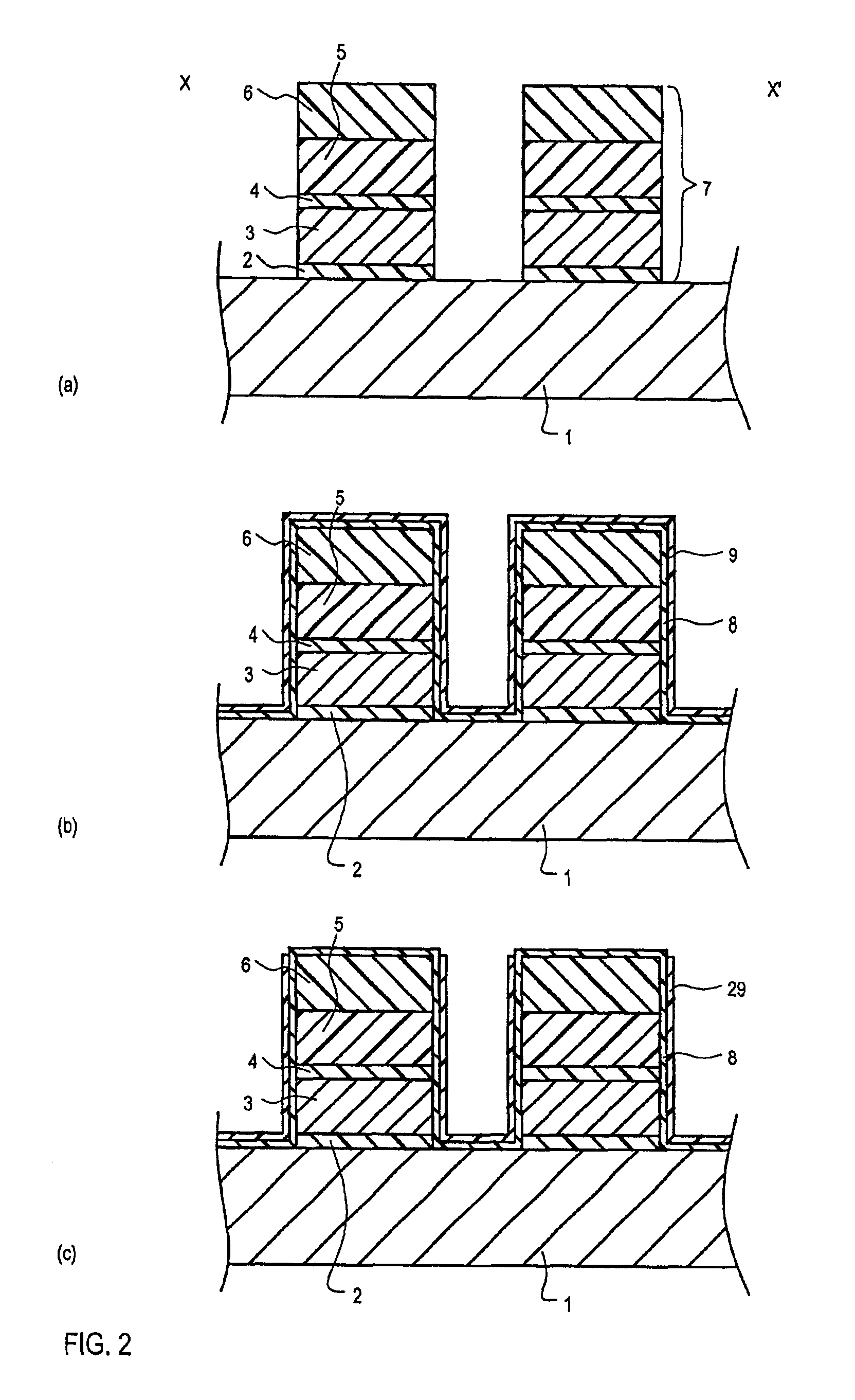Semiconductor device and its manufacturing method
a manufacturing method and semiconductor technology, applied in semiconductor devices, electrical devices, transistors, etc., can solve the problems of low reliability of tunnel oxide films, difficult manufacturing methods, and difficult process, so as to improve memory cell characteristics, reduce electric field concentration in and increase the distance between the shoulder portion of the trench and the gate electrode.
- Summary
- Abstract
- Description
- Claims
- Application Information
AI Technical Summary
Benefits of technology
Problems solved by technology
Method used
Image
Examples
first embodiment
the present invention will now be described with reference to FIG. 1. FIG. 1(a) is a plan view illustrating regions including a diffusion layer and shallow trench isolation (STI) of a semiconductor device in accordance with the first embodiment. The plan view of FIG. 1(a) may be of a group of flash memory cells. FIG. 1(b) is a cross-sectional view of the semiconductor device after various processing steps in accordance with the first embodiment. FIG. 1(b) may be a cross-sectional view taken along line X—X′ as illustrated in FIG. 1(a).
As illustrated in FIGS. 1(a) and 1(b), a flash memory cell structure on a semiconductor substrate 1 may include a tunnel oxide film 2 in the vicinity of a center directly below a floating gate electrode 3. A gate oxide film 30 may be in the vicinity of the edge of the floating gate electrode 3. Gate oxide film 30 may have a thickness that is greater than the thickness of tunnel oxide film 2. The flash memory cell structure may include a shallow trench i...
second embodiment
the present invention will now be described with reference to FIGS. 6 to 10. FIG. 6(a) is a plan view illustrating regions including a diffusion layer and shallow trench isolation (STI) of a semiconductor device in accordance with the second embodiment. The plan view of FIG. 6(a) may be of a group of flash memory cells. FIG. 6(b) is a cross-sectional view of the semiconductor device after various processing steps in accordance with the second embodiment. FIG. 6(b) may be a cross-sectional view taken along line X—X′ as illustrated in FIG. 6(a).
The present embodiment may include a feature in that a capacitance ratio of a control capacitance compared to a substrate capacitance may be higher than that of the first embodiment. This may be accomplished by forming a floating gate electrode having a recess shape. Otherwise, the basic structure may be similar to that of the first embodiment.
As illustrated in FIGS. 6(a) and 6(b), a flash memory cell structure on a semiconductor substrate 101 ...
third embodiment
the present invention will now be described with reference to FIGS. 11 to 15. FIG. 11(a) is a plan view illustrating regions including a diffusion layer and shallow trench isolation (STD of a semiconductor device in accordance with the third embodiment. The plan view of FIG. 11(a) may be of a group of flash memory cells. FIG. 11(b) is a cross-sectional view of the semiconductor device after various processing steps in accordance with the third embodiment. FIG. 11(b) may be a cross-sectional view taken along line X—X′ as illustrated in FIG. 11(a).
The present embodiment may include a feature in that the manufacturing process may be further simplified in comparison to the first and second embodiments while maintaining the basic structure of the first embodiment. Because the manufacturing method of the present embodiment may be identical to the manufacturing method up to the flash memory cell structure as illustrated in FIG. 8(c) of the second embodiment, only later steps may be describ...
PUM
 Login to View More
Login to View More Abstract
Description
Claims
Application Information
 Login to View More
Login to View More - R&D
- Intellectual Property
- Life Sciences
- Materials
- Tech Scout
- Unparalleled Data Quality
- Higher Quality Content
- 60% Fewer Hallucinations
Browse by: Latest US Patents, China's latest patents, Technical Efficacy Thesaurus, Application Domain, Technology Topic, Popular Technical Reports.
© 2025 PatSnap. All rights reserved.Legal|Privacy policy|Modern Slavery Act Transparency Statement|Sitemap|About US| Contact US: help@patsnap.com



